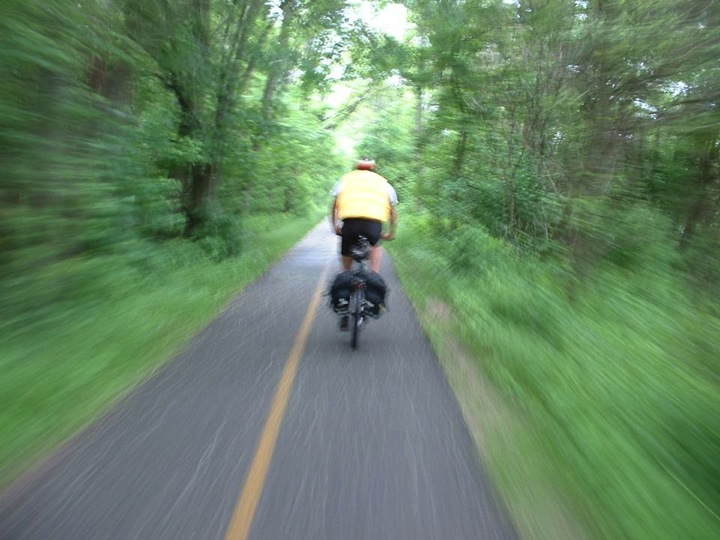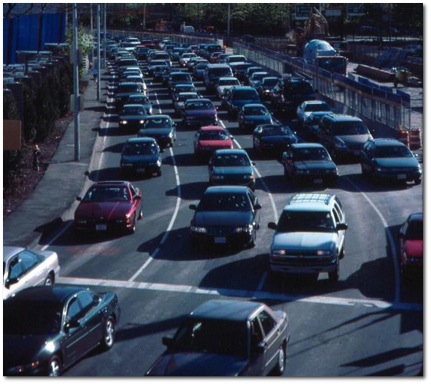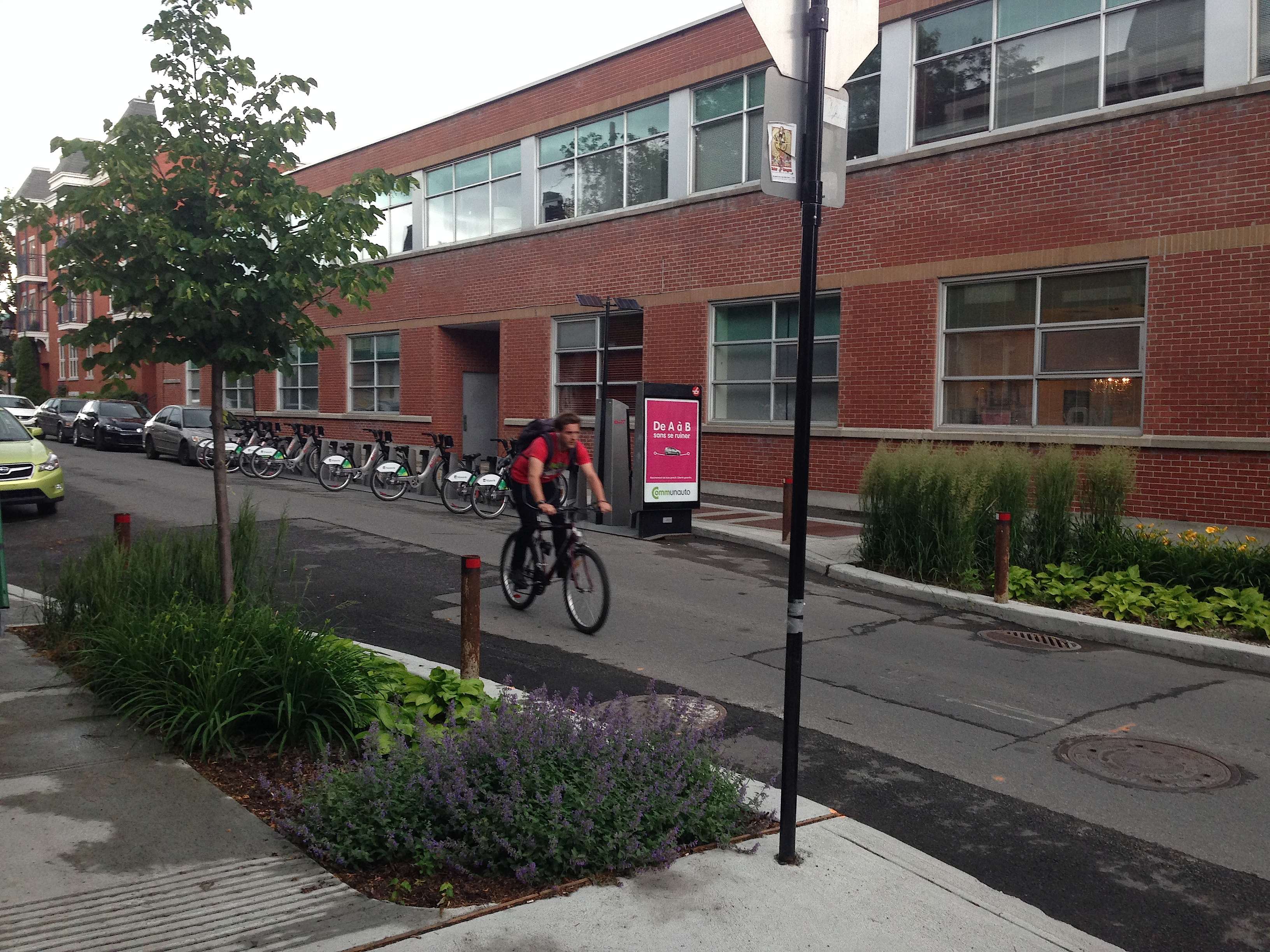
Transportation and our addiction to automobiles are at the crux of many of our largest problems: global warming, oil dependence and oil wars, obesity and other public health epidemics, urban sprawl, social justice, social isolation.
Driving an average American car produces one pound of CO2 per mile, or 7 tons of CO2 per average driver per year. (Some climate scientists say the Earth's atmosphere can handle about one ton of CO2 per person per year.) Cars are one of the most inefficient modes of transportation ever invented, requiring 1800 calories to go one mile. Bicycling, on the other hand, is the most efficient mode, requiring only 30 calories to transport a person that same mile.
More than 3/4 of all US oil consumed goes to transportation, and more than 3/4 of that is for private cars and trucks. Meanwhile, 1/3 of all US car trips are 3 miles or less -- an easy bike ride for most people.
Automobile crashes are the leading cause of death for US citizens age 35 and under, with more than 30,000 deaths per year.

The US government spends about $100B / year on highways, about $10B / year on all public transportation including Amtrak, and about $1B / year on biking and walking. And yet still many people complain that public transportation is subsidized, and that it should pay for itself! Meanwhile, the automobile industry spends about $10B / year on advertising alone. All this money flowing towards cars traps us in the driving mindset and hides other, better options.
"Free" parking is another huge problem: it actually costs lots of money to build and maintain parking -- about $5000 per parking space on the street, or $25,000 in a garage, and each lasts only about 10 years. And free parking provides a strong incentive to drive, at the expense of other modes such as bus, train, bike, or walk. Free parking isn't really free, even at the mall, since all those costs get passed on to consumers through higher prices. And the costs are staggering, totaling in the trillions of dollars per year, comparable to the federal welfare budget, according to Donald Shoup of UCLA.
To protect our historic cities, our environment, our public health and safety, our economy, and our social equity, we must break our addiction to cars and oil. We must flip the balance so that we spend more money on public transportation, bikes, and pedestrians than on highways for cars. We must make it easier, safer, and more attractive to bike and walk than to drive.

I'm a bit of a transportation policy wonk (in case you couldn't tell). I helped found and for about 10 years was a member of the Northampton Transportation and Parking Commission. I'm also a member of the Northampton Bicycle and Pedestrian Committee. I founded and led for many years the Pioneer Valley Chapter of MassBike.
The three main reasons people in the US cite for not riding their bikes to work or school are (1) fear of traffic, (2) concern about arriving in sweaty clothes, and (3) lack of adequate bike parking at the destination. (2) and (3) are fairly easy to deal with (take a change of clothes with you to work and take a bird bath in the bathroom sink; get a good bike lock and use it). (1) is harder, and requires building safe and attractive places to bike; teaching cyclists how to ride safely, and slowing car traffic down.
The chances of a pedestrian surviving an automobile crash are about 50/50 at 35 mph, but dramatically worse at higher speeds. The best way to tame speeding traffic is with traffic calming: physically restricting the roadway with curb extensions, neck-downs, and bump-outs, and including raised crosswalks, speed humps, and speed tables in congested areas with lots of bikers, walkers, and kids.
More Transportation links
- Victoria Transport Policy Institute
- Transportation Alternatives (NYC)
- People for Bikes
- League of American Bicyclists
- Walkable Communities
- Walk Boston
- MassBike
- Friends of Northampton Trails and Greenways
- National Association of Railway Passengers
- MassDOT
- "The High Cost of Free Parking" book
- Surface Transportation Policy Partnership